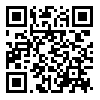1- Institute for Planning Studies
2- Economcis Department, Allameh Tabataba'i University ,mazyaki@atu.ac.ir
2- Economcis Department, Allameh Tabataba'i University ,
Abstract: (889 Views)
This study examines the gender wage gap in the Iranian labor market. One of the main challenges in this area is the low economic participation rate of women, which results in the lack of wage data for many of them. This issue prevents the true characteristics of women’s labor force supply from being accurately reflected in the data. To address this sample selection bias, a two-step Heckman model is employed, incorporating variables affecting the decision to participate in the first stage equation. The findings indicate that a gender wage gap exists to the disadvantage of women; however, accounting for sample selection bias reduces this gap. Thus, part of the observed gap is due to the sample selection error caused by the low economic participation of women. Furthermore, the results show that the wage gap in self-employment is significantly higher than in wage-based employment, and there is essentially no wage gap in the public sector. On the other hand, the gender wage gap has a direct relationship with experience and an inverse relationship with education level. Additionally, the greatest wage gap is observed in middle-level occupations. Regarding industry sectors, the gap is larger in industry than in agriculture, and the smallest gap is found in the services sector.
Type of Study: Research |
Subject:
economic development, regional economics and growth
Received: May 03 2025 | Accepted: May 31 2025
Received: May 03 2025 | Accepted: May 31 2025
| Rights and permissions | |
.jpg) |
This work is licensed under a Creative Commons Attribution 4.0 International License. |


